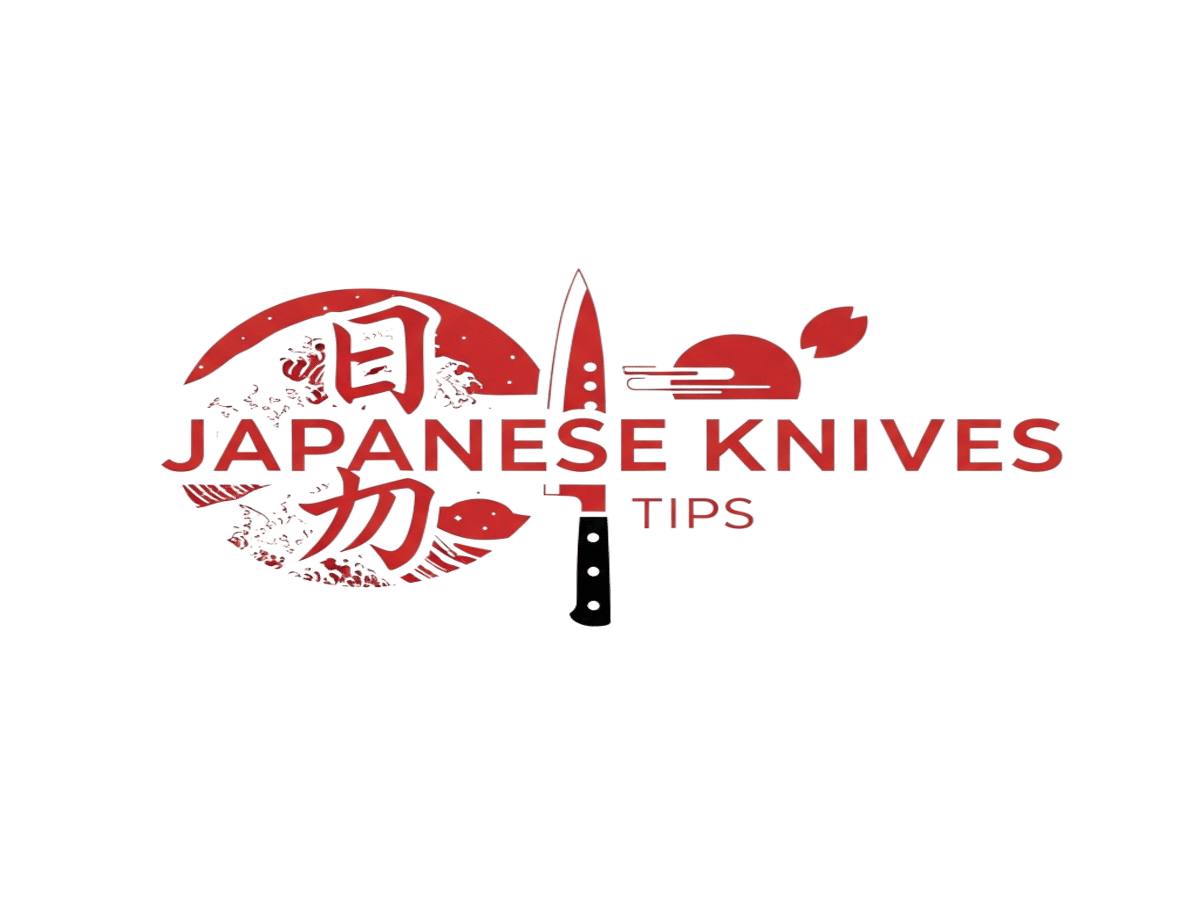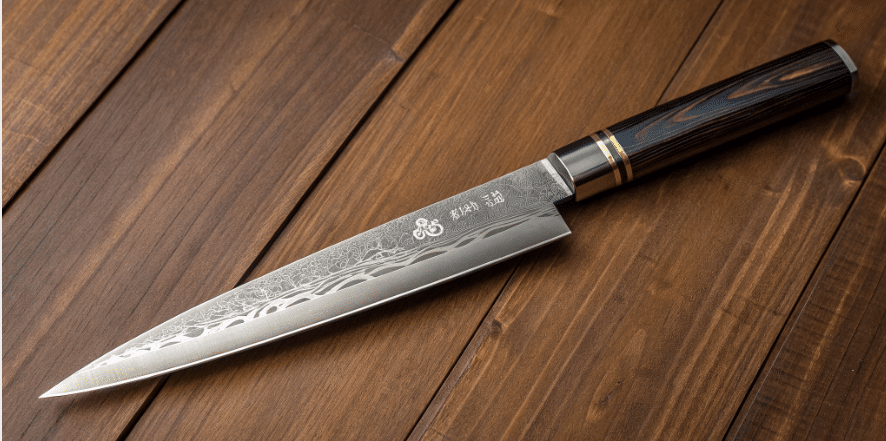This article discusses Japanese high carbon steels, with a focus on Aogami and its comparison to Shirogami. If you’ve ever looked into Japanese knives, you’ve probably heard about Aogami steel. It’s one of the top choices for sharp, durable blades. Aogami, sometimes called blue steel, is a high carbon steel that stands out because it holds an edge well and stays sharp longer than many other steels. Whether you’re a chef or just someone who loves cooking, knowing about Aogami can help you pick the right knife.
- Introduction to Japanese Steels
- What Makes High Carbon Steels Special?
- Different Types of Aogami Steel
- Why Aogami Steel is Loved by Knife Fans
- How to Care for Aogami Knives
- Comparing Aogami to Other Japanese Steels
- What to Keep in Mind When Choosing Aogami Knives
- The Feel and Look of Aogami Blades
- Who Makes Aogami Steel?
- What Customers Say About Aogami Knives
- Common Questions About Aogami Steel
- Final Thoughts on Aogami Steel
- FAQs
Introduction to Japanese Steels
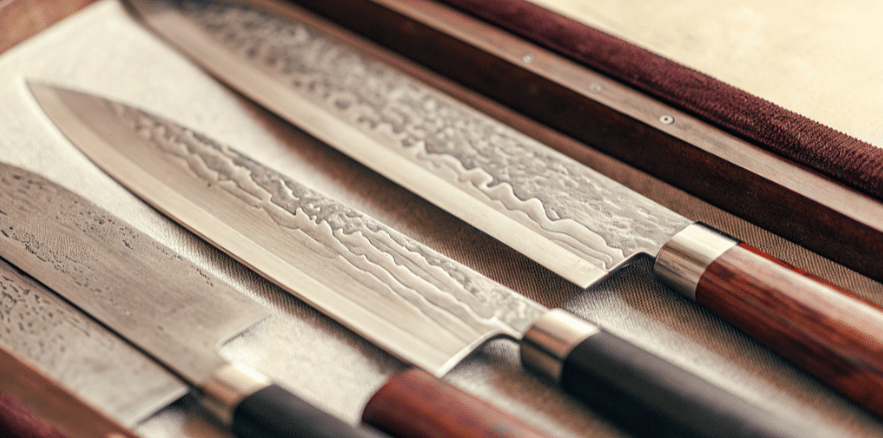
Japanese steels are amazing.
They’re sharp.
They’re hard.
They stay sharp.
Why do knife lovers go crazy for them? Here’s why:
- Edge Retention: They stay sharp for ages.
- High Hardness: Tough as nails.
- Sharpness: Cut like a dream.
Among the best Japanese carbon steels, blue steel (Aogami) and white steel (Shirogami) are the real stars. Many knife enthusiasts and professional chefs hunt for these high carbon steels. Why? They keep that razor edge for a long time. Want quality and precision in your kitchen? These are your best bet.
Aogami is special.
Also called blue steel.
Want high hardness without the brittleness? This is it. How do they do it? Carefully balanced carbon content. Plus they add molybdenum, tungsten, and chromium. Smart, right? Aogami Super from Hitachi Metals Ltd is the king. Often considered the best of the best. More carbon and alloying elements than other types. What does this mean for you?
- Superior Edge Retention: Stays sharp longer.
- Better Sharpness: Cuts like butter.
- Extended Use: Works hard, stays sharp.
Carbon content matters.
So do the metals they add.
These things change how your knife performs. Take Aogami Super’s higher carbon content and added molybdenum. They make it sharper. They make it last longer. Compare that to other steels? No contest. Shirogami steel is pure and sharp too. But here’s the thing – it needs more care.
Ready to choose a Japanese knife?
You need to know your steels.
Understanding the composition and characteristics is key. Want to pick the right one? Review the types of high carbon steels like Aogami and Shirogami. This helps you match a knife to your needs. Do you want:
- Edge Retention: Stays sharp forever?
- Sharpness: Cuts everything?
- Easy Care: Low maintenance?
Think about these factors. Your next kitchen knife will deliver the quality and performance you expect. That’s the magic of Japanese steel.
What Makes High Carbon Steels Special?
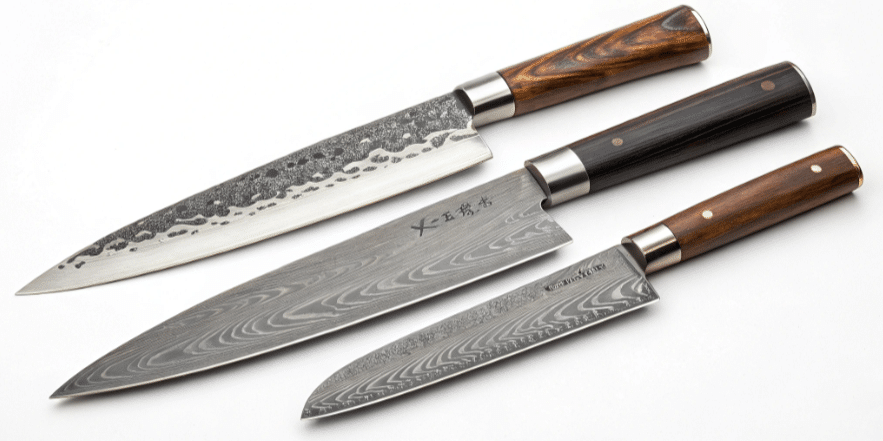
High carbon steels like Aogami have more carbon than regular steel. This extra carbon gives the steel its strength and hardness. That means knives made from Aogami can be very sharp and keep their edge for a long time. Aogami is also known for attaining high hardness, which contributes to its durability and excellent edge retention without making the blade brittle. But the steel doesn’t just have carbon. It also includes other metals like chromium, tungsten, molybdenum, and vanadium. These metals help the blade resist wear and keep it strong without becoming too brittle.
Different Types of Aogami Steel
There are several versions of Aogami steel, each with its own mix of metals and qualities. The main ones you’ll hear about are Aogami #1, Aogami #2, and Aogami Super.
- Aogami #1 has a high carbon content and is very sharp. It’s often used for sushi knives where precision is key.
- Aogami #2 is a bit tougher and more durable, making it great for everyday kitchen knives that need to handle a variety of tasks.
- Aogami Super is the top-tier steel in this group. It has the highest carbon content and includes molybdenum and vanadium. The inclusion of molybdenum enhances its edge retention, hardness, and overall quality, making this steel capable of reaching very high hardness while still being tough enough for serious use.
Why Aogami Steel is Loved by Knife Fans
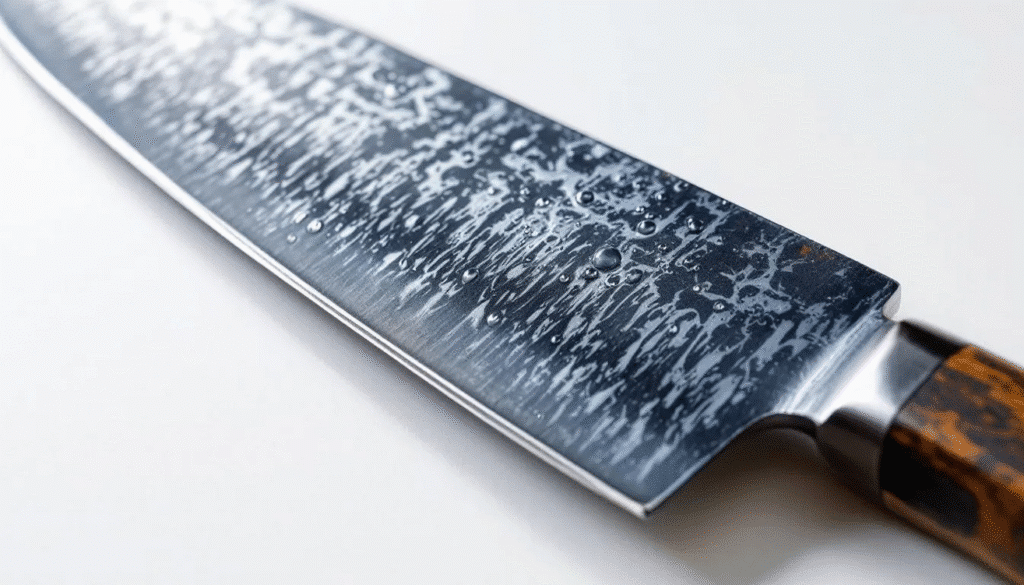
Many knife owners choose Aogami steel because it offers a great balance of sharpness and durability. It’s easy to sharpen with a whetstone, and once sharpened, it stays sharp for a long time. The presence of vanadium in the steel adds strength and helps resist chips, which means the blade can handle regular use without getting damaged easily.
One thing to remember is that Aogami steel is a high carbon steel, so it can develop a patina over time. The steel can bear a patina or marks of use, which adds character and tells the story of the knife’s history. This patina is a natural layer that forms as the steel reacts with moisture and air. Some owners appreciate how their knife bears these unique marks, as it reflects their personal connection and care, while others prefer to keep their blades shiny and clean. Either way, proper maintenance by the owner can help keep the knife in good shape.
How to Care for Aogami Knives
Taking care of Aogami knives isn’t complicated, but it does need some attention. After using your knife, wash it with warm water and mild soap, then dry it right away. Avoid putting it in the dishwasher or letting it soak in water. To keep rust and patina at bay, many owners wipe their blades with a light layer of mineral oil or camellia oil.
Sharpening is a key part of maintenance. Using a whetstone is the best way to sharpen Aogami knives. Since the steel is hard, a good sharpening stone will help keep the edge razor-sharp without wearing down the blade too much. Regular sharpening also helps prevent chips and keeps the blade performing well.
Comparing Aogami to Other Japanese Steels
Aogami steel often gets compared to Shirogami, or white steel. Both are high carbon steels of a similar origin, but they have some differences in composition and performance. Shirogami is usually a purer kind of carbon steel, which means it can get sharper but might be more prone to rust and chipping. Aogami, on the other hand, is a different kind that has extra metals like chromium and tungsten, giving it better durability and edge retention. In some cases, one kind of steel may be more suitable than the other depending on the application or treatment—for example, Aogami may be preferred for tasks requiring more toughness, while Shirogami might be chosen for maximum sharpness.
Compared to Western-style steels, Aogami usually offers a sharper edge and better edge retention but requires more care to avoid rust. It’s not stainless steel, so it’s important to dry and oil the blade after use.
What to Keep in Mind When Choosing Aogami Knives
If you’re thinking about buying an Aogami knife, consider what you’ll use it for. If you want a knife for delicate slicing, like sashimi, Aogami #1 or Aogami Super could be great choices. For general kitchen work, Aogami #2 is a solid pick because it balances sharpness and toughness.
Also, think about maintenance. These knives need regular care to keep them rust-free and sharp. If you’re okay with that, you’ll enjoy a blade that feels great and cuts like a dream.
In the end, the choice of Aogami knife comes down to your specific needs and preferences.
The Feel and Look of Aogami Blades
Aogami knives often have a beautiful blue-coloured label or wrapping around the blade, and this blue colour is used to distinguish Aogami steel from other types, such as Shirogami (white steel). The steel itself has a fine grain and can be polished to a mirror finish or left with a matte look, depending on the maker’s style.
Some blades come with a layered construction, where the Aogami steel is the core, and softer stainless steel is layered around it. This design provides support to the Aogami core, enhancing durability and performance. It also helps protect the blade from rust, makes the knife easier to handle, adds strength, and prevents chipping.
Who Makes Aogami Steel?
Hitachi Metals Ltd. is one of the most well-known makers of Aogami steel. Their steel is trusted worldwide for its quality and consistency. Many knife makers choose Hitachi’s Aogami steel because it’s reliable and performs well in the kitchen. Of note, renowned Japanese smiths such as Shigefusa, Yoshikane, and Takeda are known for crafting exceptional knives using Aogami steel.
What Customers Say About Aogami Knives
People who own Aogami knives often say they’re very satisfied with their purchase. Customers frequently review a variety of Aogami products, sharing their experiences with different knife models and steel products. Many potential buyers read these reviews to inform their own purchasing decisions. They like how sharp the blades get and how long they stay sharp. Many customers also appreciate the steel’s strength and how the knives handle different cutting tasks without chipping.
Some mention the patina that forms over time as a sign of the knife’s character. Others suggest using a good whetstone and keeping the blade clean to avoid rust and maintain the knife’s edge.
Common Questions About Aogami Steel
Does Aogami steel rust?Yes, because it’s high carbon steel, it can rust if not cared for properly. Drying the blade and applying a thin layer of oil helps prevent rust.
Is Aogami steel hard to sharpen?Not really. It’s hard steel but sharpens well with a whetstone. Regular sharpening keeps the edge strong.
Can Aogami knives chip?They can chip if used roughly, like cutting bones or frozen food. These knives are made for precision cutting, so avoid twisting or prying with them.
What’s the difference between Aogami and stainless steel?Stainless steel resists rust better but doesn’t get as sharp or hold an edge as long as Aogami. Aogami is a high carbon metal with specific alloying elements, so it needs more care but offers better cutting performance.
Final Thoughts on Aogami Steel
If you want a knife that’s sharp, strong, and lasts a long time, Aogami steel is a great choice. It’s made for people who appreciate a fine edge and don’t mind a little extra care. Whether you’re slicing fish, chopping veggies, or doing detailed kitchen work, Aogami blades deliver.
Keep your knife clean, sharpen it with a whetstone, and enjoy the way it cuts. Aogami steel has earned its spot as one of the best Japanese steels out there, and once you try it, you’ll see why so many knife owners stick with it.
That’s the lowdown on Aogami steel. If you’re thinking about adding a new knife to your kitchen, this steel is worth a close look. It’s sharp, durable, and made with a quality that’s hard to beat. Keep it clean, sharpen it right, and your Aogami blade will be a trusty kitchen partner for years to come.
FAQs
Will Aogami knives rust if I don’t take care of them?
Yeah, they can. Aogami is high carbon steel, so it’s not stainless. If you leave them wet or don’t dry them right after use, rust can show up. Just wipe them dry and put a little oil on the blade now and then, and you’ll be good.
Are Aogami knives hard to sharpen?
Not really. They’re hard steel, but they sharpen nicely with a whetstone. It takes some practice, but once you get the hang of it, keeping the edge sharp is pretty straightforward.
Can I use Aogami knives for tough stuff like bones or frozen food?
It’s best not to. These knives are made for precise cutting, not heavy-duty chopping or prying. Using them on hard stuff can cause chips or damage. Stick to slicing softer foods to keep your blade happy.
